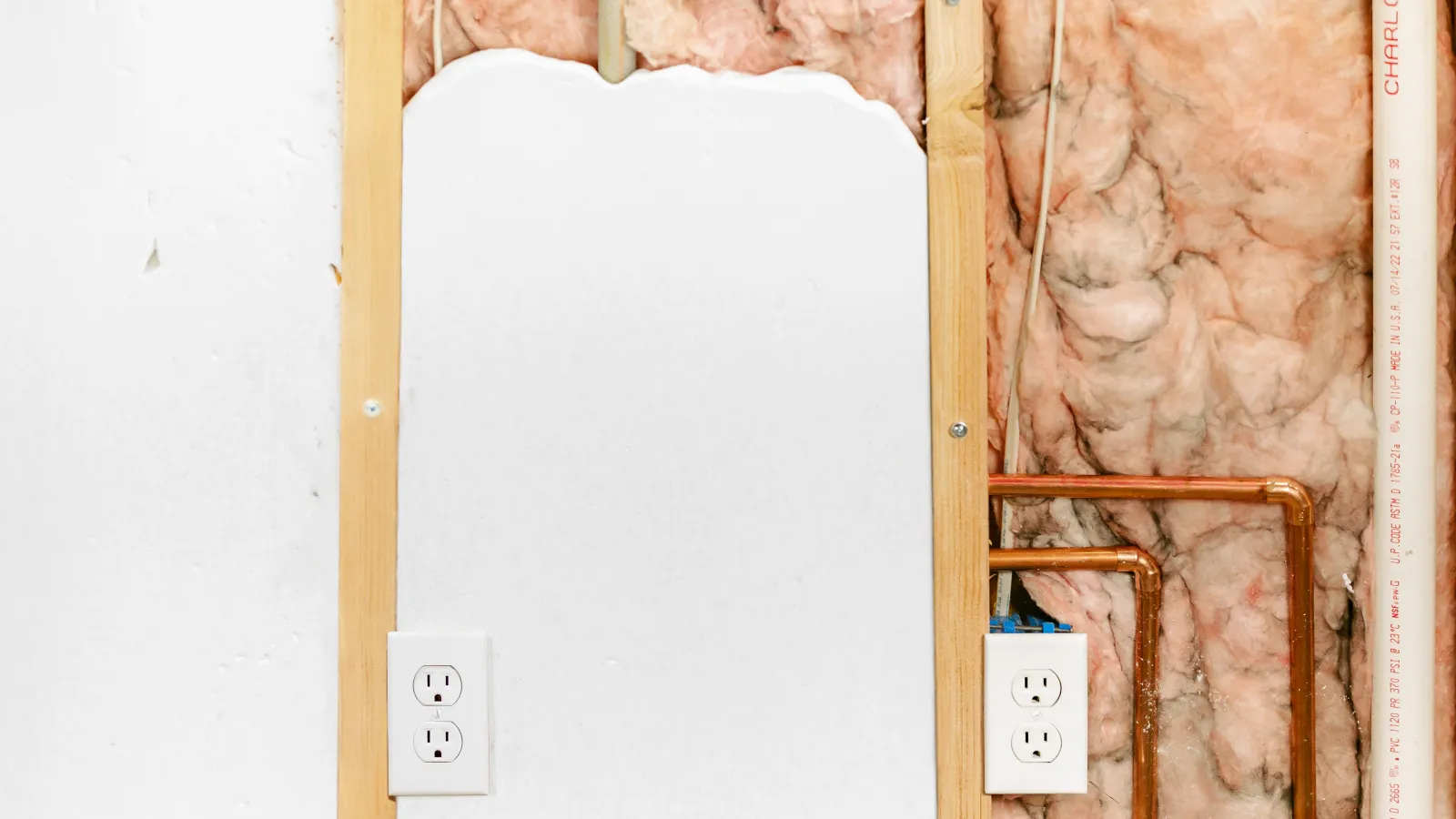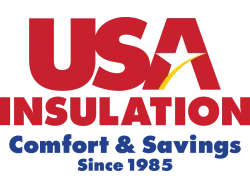When it comes to home insulation, one of the most confusing decisions homeowners face is choosing between faced and unfaced insulation. With energy costs rising and comfort being a priority, making the wrong choice could result in hundreds of dollars in wasted energy bills and potential moisture problems. At USA Insulation, we help thousands of homeowners navigate this critical decision every year.
What Is Faced vs Unfaced Insulation?
Faced insulation comes with a backing material, typically kraft paper, foil, or plastic, that acts as a vapor retarder. This facing is designed to control moisture movement through your walls and provide a thermal break.
Unfaced insulation is the raw insulation material—fiberglass, cellulose, or mineral wool—without any backing. It's designed for specific applications where vapor control isn't needed or where a vapor barrier already exists.
The key difference isn't just the backing material—it's about moisture control and where each type performs best in your home.
Understanding Vapor Barriers and Vapor Retarders
Here's where many homeowners get confused: faced insulation is not technically a vapor barrier. It's classified as a Class II vapor retarder, which means it slows down moisture movement but doesn't completely stop it.
Kraft faced insulation (the most common type) has a perm rating of around 1.0, making it effective at controlling moisture while still allowing some vapor transmission. This is actually beneficial because it prevents moisture from getting trapped in your walls, which could lead to mold and structural damage.
Vapor barrier insulation with plastic or foil facing provides even greater moisture control, with perm ratings below 0.1. These are typically used in extreme climates or special applications.
When to Use Faced Insulation
Exterior Walls
Use faced insulation in exterior walls where you need moisture control. The facing should always face the warm side of the wall (toward the living space in cold climates). This prevents warm, moist air from penetrating into the wall cavity where it could condense and cause problems.
Basement Applications
Faced or unfaced insulation in basement walls is a common question we get. Use faced insulation in basement walls when insulating between studs, with the facing toward the interior. However, if you're adding insulation over existing insulation, choose unfaced to avoid creating a double vapor barrier.
Attic Applications
In most attics, use faced insulation for the initial installation between joists. The facing should face down toward the living space below. However, if you're adding insulation on top of existing faced insulation, always use unfaced to prevent moisture trapping.
When to Use Unfaced Insulation
Adding to Existing Insulation
Never install faced insulation over existing faced insulation. This creates a double vapor barrier that can trap moisture, leading to serious problems. When adding insulation to your attic or walls, always use unfaced insulation.
Interior Walls
For sound dampening between rooms, use unfaced insulation. Interior walls don't need vapor control since both sides are conditioned space.
Specific Climate Zones
In hot, humid climates (particularly the Deep South), building codes sometimes require unfaced insulation to prevent vapor drive from the outside. Always check local codes or consult with a professional.
Installation Differences That Matter
Faced Insulation Installation
Faced batt insulation requires careful attention to orientation. The facing must contact the warm side of the assembly and be properly sealed at edges. Staple flanges every 6-8 inches, ensuring the facing lies flat against the framing.
Common mistake: Installing the facing backward. Remember: in cold climates, facing goes toward the heated space.
Unfaced Installation
Unfaced insulation relies on friction fit between studs. Don't compress it—compressed insulation loses R-value dramatically. Cut batts slightly wider than the cavity for a snug fit without gaps.
Regional Climate Considerations
Cold Climates (Northern States)
In heating-dominated climates, use faced insulation in exterior walls with facing toward the interior. This prevents warm, moist indoor air from reaching the cold exterior sheathing where it would condense.
Mixed Climates (Transitional Zones)
Areas with significant heating and cooling seasons require careful consideration. When to use faced vs unfaced insulation depends on your specific location and building design. Professional assessment is recommended.
Hot Climates (Southern States)
Some southern regions experience "reverse vapor drive" where moisture moves from outside to inside. Local codes may require unfaced insulation or specialized vapor retarder placement.
Common Mistakes That Cost Money
Double Vapor Barrier Problems
Installing faced insulation over existing faced insulation traps moisture, leading to:
- Mold growth
- Reduced insulation performance
- Structural damage
- Indoor air quality issues
Wrong Climate Application
Using faced insulation in the wrong climate zone or application can actually make moisture problems worse. This is why professional assessment is crucial.
Improper Installation
Even the right insulation installed incorrectly won't perform. Gaps, compression, and improper facing orientation dramatically reduce effectiveness.
Cost Comparison and Value
Faced insulation typically costs 10-15% more than unfaced, but this small upcharge provides significant value:
- Moisture control
- Easier installation in many applications
- Code compliance in most regions
- Better long-term performance
House insulation cost varies by region and application, but the difference between faced and unfaced is minimal compared to the potential cost of moisture damage from choosing the wrong type.
Building Code Compliance
Most building codes require vapor retarders in climate zones 5 and higher (colder regions). Faced insulation typically satisfies this requirement, but always verify local codes. Some areas have specific requirements for:
- Vapor retarder placement
- Perm ratings
- Installation methods
Making the Right Choice for Your Home
Is faced or unfaced insulation better? The answer depends entirely on your specific application:
- New construction exterior walls: Faced insulation
- Adding attic insulation: Unfaced over existing insulation
- Interior walls: Unfaced for sound control
- Basement walls: Usually faced, facing inward
- Crawl spaces: Depends on ventilation and climate
Why Professional Assessment Matters
At USA Insulation, we see the consequences of wrong insulation choices regularly. Moisture problems, energy waste, and comfort issues often stem from well-meaning DIY installations that chose the wrong type or installed it incorrectly.
Our certified professionals assess:
- Your climate zone requirements
- Existing insulation conditions
- Building code compliance
- Moisture management needs
- Energy efficiency goals
We utilize advanced diagnostic tools to pinpoint problem areas and recommend the most suitable insulation strategy for your specific home.
Conclusion
Choosing between faced and unfaced insulation isn't just about the product—it's about understanding your home's specific needs, climate requirements, and moisture management strategy. While faced insulation is right for most exterior wall applications, unfaced insulation is essential when adding to existing insulation or in specific climate conditions.
Don't let confusion about vapor barriers and installation requirements cost you comfort and money. The small investment in professional assessment pays dividends in energy savings, comfort, and avoiding costly moisture problems.
Ready to make the right insulation choice for your home? Contact USA Insulation today for a free, no-obligation assessment. Our certified professionals will assess your specific needs and recommend the optimal insulation solution to maximize comfort, efficiency, and value.



